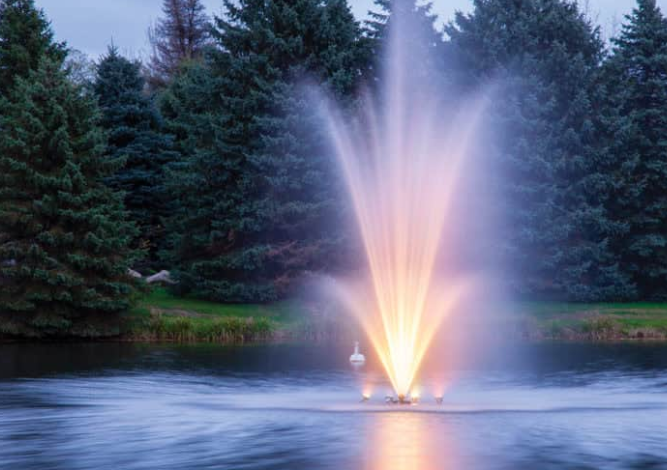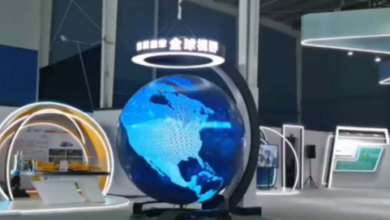Safety Meets Style: Enhancing Your Outdoor Space with Practical Fountain Lights

Evening gatherings around your water feature shouldn’t come with hidden risks. Dark pathways and unlit pond edges create dangerous conditions that can turn peaceful moments into accidents waiting to happen. Smart lighting solutions address these safety concerns while transforming your outdoor space into an inviting nighttime retreat. The right illumination strategy protects your family and guests from potential hazards.
Fountain lights serve as essential safety equipment disguised as decorative elements. These specialized lighting systems illuminate water features and surrounding walkways, preventing stumbles and falls that commonly occur near ponds after sunset. Property owners often underestimate how quickly visibility drops around water features once natural light fades. Strategic placement of these lights creates clear sight lines and defined boundaries around your aquatic installation.
The Hidden Dangers of Unlit Water Features
Ponds and fountains present unique safety challenges that become magnified in darkness. Wet surfaces around water features create slippery conditions that increase fall risks significantly. Children and elderly visitors face particular vulnerability when navigating unfamiliar outdoor spaces without adequate lighting. Emergency room statistics show that outdoor fall injuries spike during evening hours, with many incidents occurring near decorative water elements.
Visibility Challenges Around Water: Standing water reflects available light in unpredictable ways, creating optical illusions that distort depth perception. What appears to be solid ground might actually be shallow water or wet stone. These visual tricks become more pronounced as ambient light decreases, making proper illumination a critical safety investment rather than a luxury addition.
Creating Safe Pathways with Strategic Illumination
Effective lighting design focuses on eliminating dark zones where accidents typically occur. Path lighting should extend from main walkways to seating areas around your fountain, creating continuous sight lines throughout the space. Consider the movement patterns of family members and guests when planning your lighting layout. Areas where people naturally gather or pause require extra attention to prevent missteps on uneven surfaces.
Boundary Definition Through Light: Clear visual boundaries help visitors understand where water begins and solid ground ends. Edge lighting along pond perimeters serves as an invisible safety barrier that guides foot traffic away from potential hazards. This approach works particularly well for irregularly shaped water features where natural boundaries might not be immediately obvious to newcomers.
See also: Maximising Home Comfort: The Essential Guide to Air Conditioning Services in Sydney
Aesthetic Enhancement Beyond Basic Safety
Quality fountain lighting transforms ordinary water features into captivating focal points that extend your outdoor living season. Underwater lights create dramatic effects as they illuminate moving water, while perimeter lighting showcases landscaping elements that might otherwise disappear after dark. The interplay between light and water movement produces ever-changing visual displays that enhance property value and personal enjoyment. Color-changing options allow you to customize the mood for different occasions or seasons.
Layered Lighting Approaches: Combining multiple light sources creates depth and visual interest while maintaining safety standards. Submersible lights highlight fountain spray patterns, pathway lights ensure safe navigation, and accent lights showcase surrounding plantings. This layered approach prevents the harsh, single-source lighting that can create uncomfortable shadows or glare conditions.
Technical Considerations for Fountain Lighting Systems
Modern fountain lighting systems offer energy-efficient options that minimize operational costs while maximizing safety benefits. LED technology provides bright, consistent illumination with significantly longer lifespans than traditional bulbs. Solar-powered options eliminate wiring concerns for remote installations, though battery backup systems ensure reliable operation during extended cloudy periods. Timer controls and motion sensors add convenience while reducing energy consumption during low-activity hours.
Installation and Maintenance Factors: Professional installation ensures proper waterproofing and electrical safety compliance. Quality fixtures designed specifically for water feature applications resist corrosion and maintain performance in challenging outdoor conditions. Regular maintenance schedules should include lens cleaning, bulb replacement, and electrical connection inspections to maintain optimal safety and aesthetic performance.
Seasonal Adaptations and Weather Resistance
Fountain lighting systems must withstand varying weather conditions throughout the year. Winter installations face unique challenges as ice formation can damage improperly protected fixtures. Quality lighting systems include features like automatic shut-off sensors that protect equipment during extreme weather events. Spring startup procedures should include comprehensive system checks to identify any weather-related damage that might compromise safety or performance.
Weather-Specific Safety Considerations: Rain and snow create additional slip hazards around water features that proper lighting helps mitigate. Increased illumination during storm conditions helps family members and visitors navigate safely to sheltered areas. Motion-activated lighting provides on-demand visibility without wasting energy during extended periods of reduced outdoor activity.
Long-Term Benefits and Property Value Impact
Well-designed fountain lighting extends the usable hours of your outdoor space, effectively expanding your living area into evening hours. Property appraisers consistently recognize quality outdoor lighting as a valuable improvement that appeals to potential buyers. Insurance considerations may also favor properties with adequate safety lighting, as reduced accident risks can positively impact liability coverage. The combination of safety enhancement and aesthetic improvement creates lasting value that extends well beyond initial installation costs.
These lighting improvements offer several key advantages:
- Enhanced safety through improved visibility and hazard identification
- Extended outdoor entertaining seasons with comfortable evening environments
- Increased property values through professional landscape lighting installations
- Reduced liability risks associated with poorly lit outdoor water features
- Energy-efficient operation through modern LED and solar technologies
Conclusion
Fountain lighting represents a smart investment that addresses practical safety needs while delivering significant aesthetic rewards. The dual benefits of accident prevention and visual enhancement make these systems essential components of responsible water feature ownership. Property owners who prioritize both safety and style discover that quality lighting transforms their outdoor spaces into year-round gathering places that family and friends can enjoy with confidence. Take action now to evaluate your current lighting situation and identify areas where improved illumination could enhance both safety and beauty around your water features.




